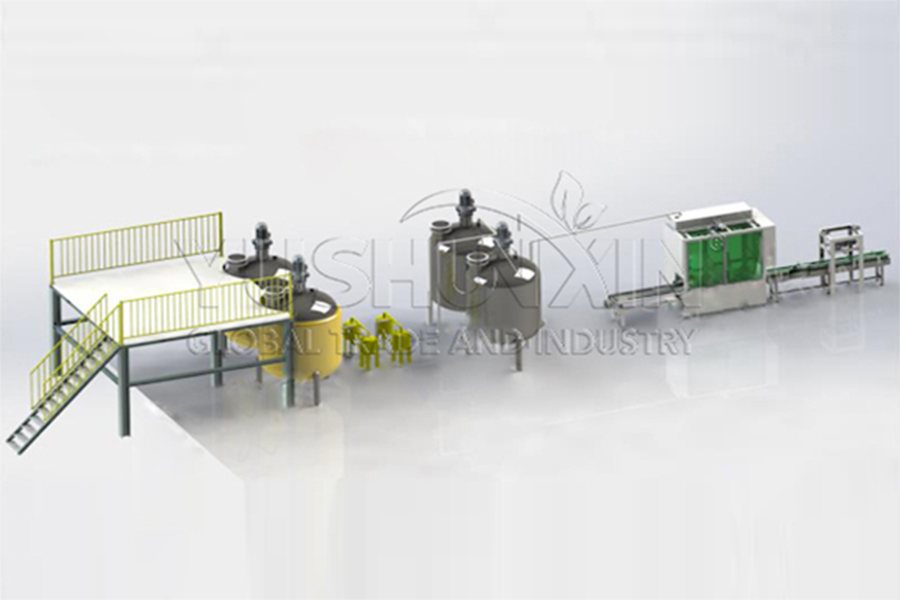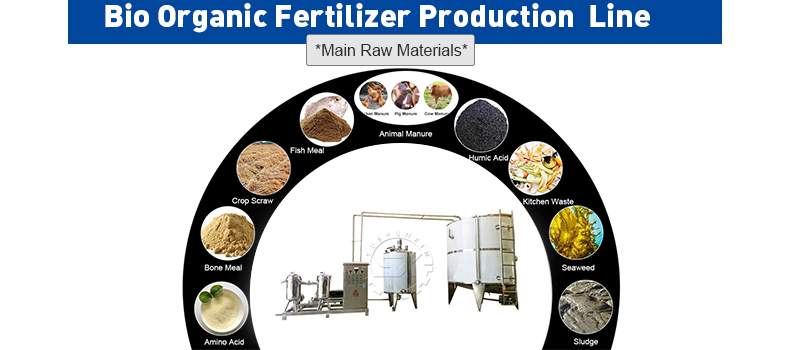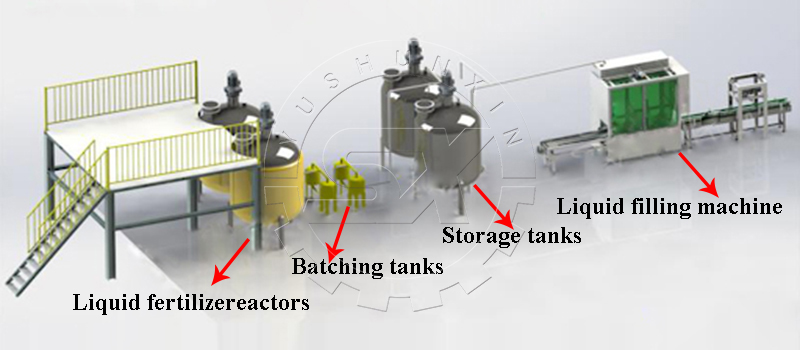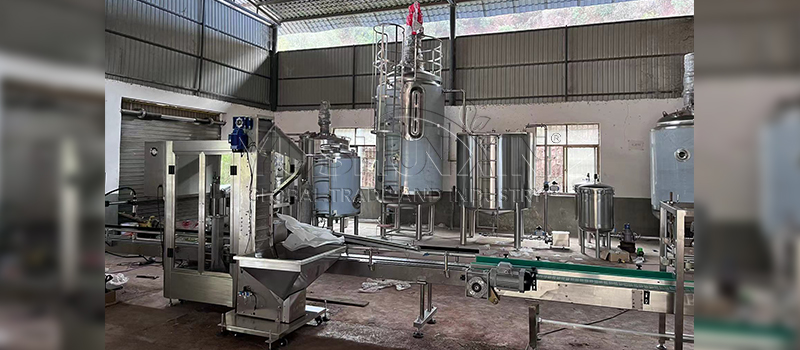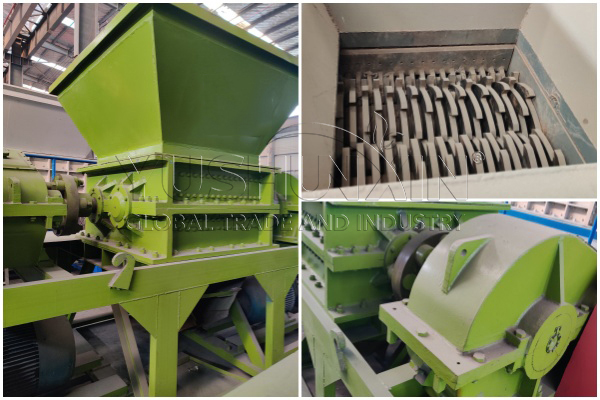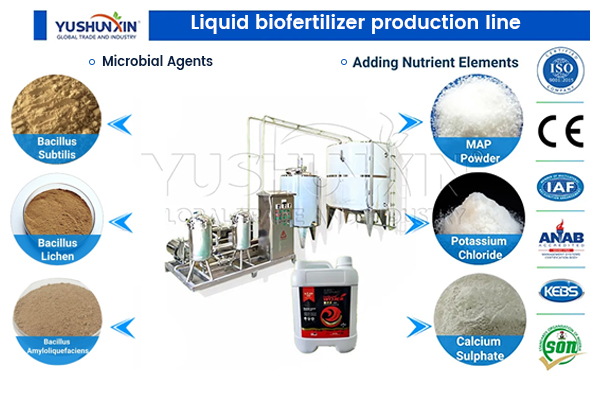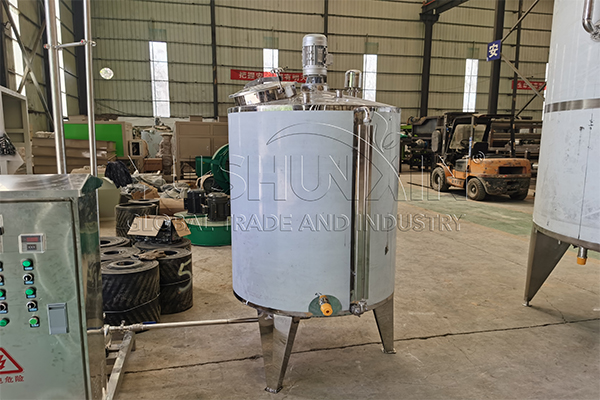Are you looking for easy – to – use liquid biofertilizer production technology? YUSHUNXIN can offer you the suitable liquid biofertilizer production business solutions. For example, manufacturing liquid biofertilizer from organic waste, establishing bio npk liquid fertilizer making lines. Whether you are planing to start the liquid biofertilizer production, or aiming to upgrade liquid biofertilizer making machines, comes to consult us now.
Top 2 liquid biofertilizer production business solutions
The market prospect of producing liquid biofertilizer is very promising. The following are two bio liquid fertilizer production unit in YUSHUNXIN:
Organic waste bio liquid fertilizer manufacturing plan
If you want to make bio liquid fertilizer at a low price, setting up the organic liquid biofertilizer production line is a good choice. Because you can manufacture bio liquid fertilizer from organic waste. such as cow dung, chicken manure.ect. They come at a low cost. And the production process of liquid organic biofertilizeris simple, including animal manure solid – liquid separation, filter impurities, disinfection, anaerobic fermentation, and packaging. By these steps, you can successfully get bio organic liquid fertilizer.
Bio npk liquid fertilizer production line
If you plan to produce nutrient-rich liquid biofertilizer, we advise you make liquid biofertilizer from NPK. NPK elements can provide sufficient nutrients for plants. There are a set of NPK liquid biofertilizer production unit in YUSHUNXIN, including dynamic feeder, a liquid chelating tank, a filtration device, and automatic liquid biofertilizer packaging machine,etc. By adjusting the input raw material ratio of the dynamic feeder, you can produce liquid NPK biofertilizer with different formulas.
Liquid bio NPK fertilizer production line
Can you provide fish residue liquid biofertilizer production technology?
Of course. Compared withe other liquid biofertilizer production technology, the first step of making fish resuide liquid biofertilizer is grinding the fish into fine powder. It can speed up the enzymatic reaction. At the same time, it can also ensure that the fish residue and other additives (such as microbial agents, trace elements, etc.) are evenly mixed. For this, we designed the double-shaft grinder. The double-shaft grinder uses two relatively rotating knife rollers to tear, shear and squeeze the fish residue with blades. It can quickly and effectively break the fish residue into small particles to meet the needs of producing fish protein biological liquid fertilizer.
How to add microbial agentsin liquid biofertilizer production technology?
Generally, the commonly used agents in bio liquid fertilizer production are potassium-dissolving bacteria, streptomyces, organic matter-decomposing bacteria, etc. You can use the small batching tank for adding them before chelation. YUSHUNXIN’s small batching tanks use high-quality stainless steel, such as SUS304 and SUS316, good corrosion resistance. And they have insulation layers and stirring devices.This can effectively blend the microbial agent with water and transfer them into chelation tank.
Can I add some nutrient element in bio liquid fertilizer manufacturing process?
Of course. In order to produce high-quality bio liquid fertilizer, you can add some nutrients to the liquid biofertilizer auxiliary fermentation tank. such as nitrogen, phosphorus, potassium, calcium, magnesium, and sulfur powder. Some trace elements, such as iron, manganese, and zinc.
How to set upthe 10 tons/day liquid biofertilizer production unit in USA?
As an experienced biofertilizer machines supplier, YUSHUNXIN has provided perfect liquid biofertilizer production business solutions for customers around the world.For example, we assisted American customers in setting up a 10 ton/day liquid biofertilizer manufacturing plant. The production line was finally sold for $55,365. In addition, we also helped our customers in Bangladesh to build a liquid fertilizer production line with 4 ton/hour. If you want to establish the liquid biofertilizer manufacturing plant, welcome to consult!
In additional, except for liquid biofertilizer production line, YUSHUNXIN can also provide bio organic fertilizer granulation line, compound biofertilizer production plan for you. If you need, feel free to consult us!
Content


